Submitted on
So we had our energy audit on Friday, and it was worthwhile. A three-person team led by Dave Boettcher of Next Step Living spent better than three hours at our house, investigating, assessing, counseling, and repairing, and both Georgie and I enjoyed the experience, in addition to the knowledge and savings we gained.
Long-time readers will know that we've been working on lowering our energy use practically since we moved in: our friend and contractor Harry Chehames of Cedar Builders replaced the windows on our first floor, I wrapped (some of) the pipes in our basement in insulation and applied expanding foam to crevices in our basement, and we installed as many CFLs as we could, changed both our shower heads to low-flow and both our toilets to one-gallon-per-flush, installed programmable thermostats, etc.
So, perhaps it wasn't a surprise that Dave said our house was tighter than 90 percent of the houses he's seen, not only working for Next Step but in similar positions previously. Part of that is testament to our work, but I suspect a larger part is testament to the generally breezy state of our housing stock.
Under his tutelage, I now know why and how I should wrap the pipes leading from our Superstore water tank, seal the ducts in our air system (I assumed they should be done, but he gave me the specific reasons that it's more important than I'd thought) and take other measures.
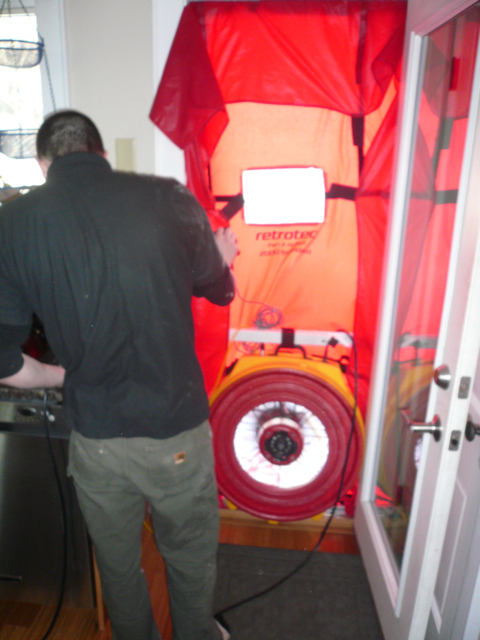 Once they toured the house, using their thermal imaging device and native smarts, they turned on the door blower they brought and went through again. The device is just as it sounds: They open your door and replace it with a sheet of plastic held tight to the opening with an adjustable frame. The plastic has a hole for a large blower that faces out, changing the pressure in the house so that air is flowing in, instead of out, as it normally does. All the micro (and not-so-micro) pathways that leak air are accentuated by the blower, making them appear in even sharper contrast in the thermal imager.
Once they toured the house, using their thermal imaging device and native smarts, they turned on the door blower they brought and went through again. The device is just as it sounds: They open your door and replace it with a sheet of plastic held tight to the opening with an adjustable frame. The plastic has a hole for a large blower that faces out, changing the pressure in the house so that air is flowing in, instead of out, as it normally does. All the micro (and not-so-micro) pathways that leak air are accentuated by the blower, making them appear in even sharper contrast in the thermal imager.
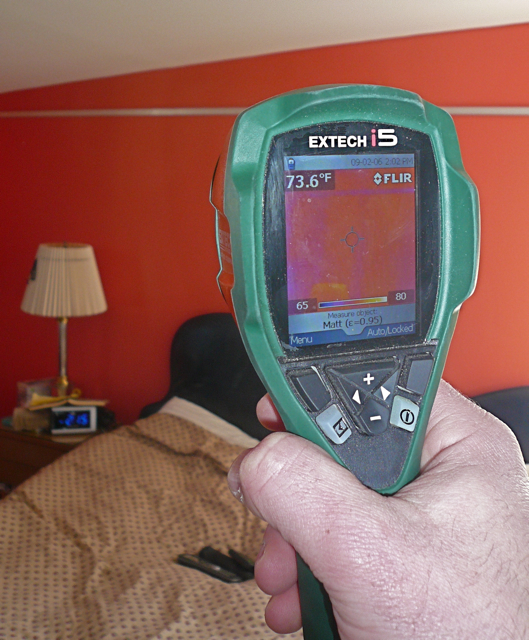
It showed, for example, that the contractor who added the second floor to our house in the '70s did use insulation in the roof, but didn't use much diligence in how he did it. Dave estimated that altogether, 30 percent of our ceiling space is not insulated. He said that for the savings that would accrue, he doesn't consider it worthwhile to address the problem, though.
That wasn't the case, however, for a space behind our bedroom closet reached by a loose-fitting door. He said the space was built to be outside our thermal envelope, even though it's under the sloping roof, but pointed out that there was very little temperature difference between that space and the bedroom. He noted several places where there was no insulation, and other places where it had fallen from between the studs.
The lack of insulation, coupled with the un-tight closure, amounted practically to our having no door at all. Even though he recommended that we go back into that space, and further down the side of the house through an opening we'd have to create, for now he asked Spencer Triehy, one of the two service providers on his crew, to screw the door closed and to caulk the seam around the opening.
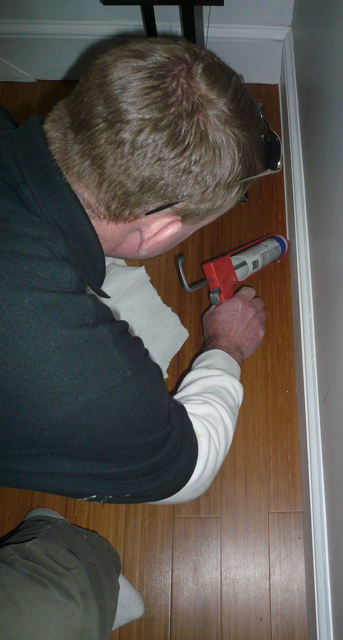 Meanwhile, he asked Chris Collar, the other service provider, to caulk where our bamboo floor meets the walls on the first floor, which his thermal imager revealed as a weakness. It showed the same problem on the stairs, but they're carpeted so there was no way to reach the seam.
Meanwhile, he asked Chris Collar, the other service provider, to caulk where our bamboo floor meets the walls on the first floor, which his thermal imager revealed as a weakness. It showed the same problem on the stairs, but they're carpeted so there was no way to reach the seam.
They also aerated our upstairs faucet, and greatly improved the air seal on our front and back doors.
Total cost for the visit was about $35 above the base cost, due to the materials they used — in line with expectations. Part of the service was a report detailing what they did, and what savings we can expect to gain. For the work they did, they estimated an annual savings of $211, which is the annualized equivalent of getting 40 percent off their service. And, of course, the savings will repeat every year, and increase as energy costs increase, while we'll never have to have them back.
Additionally, they estimated that if we do the insulating work behind the closet and behind the gallery space that lines our upstairs hallway, we can expect to save an additional $400-plus annually. I have no estimate on what we'll have to pay to have that work done, but I can't imagine it would be too too much more than
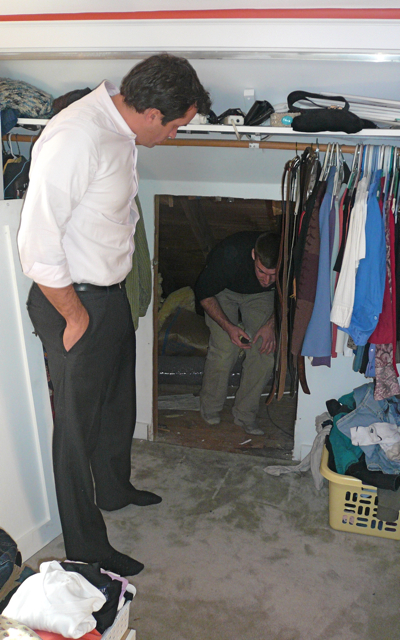 one year's savings.
one year's savings.
One way in which our visit wasn't typical is that Next Step Living CEO Geoff Chapin was there for much of the time. His reason for being there was to ensure that the photographer sent by Associated Press for its story on energy auditing got situated OK. (Yes, our pictures will probably be in some papers nationwide. If you see it, let us know, wouldya?) And, David Lowe, who's begun working for Next Step selling its services to employers who then can offer them as a benefit to employees, also came by to become more familiar with the process.
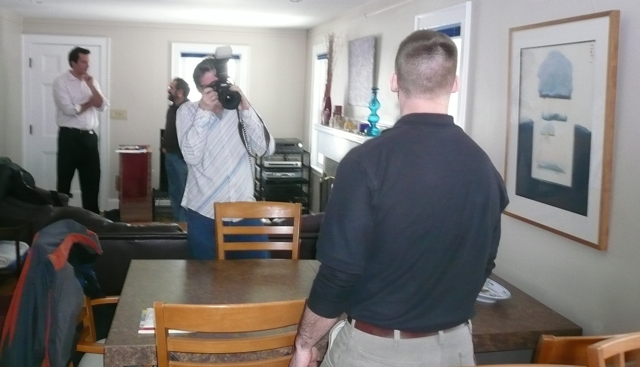
- Michael's blog
- Log in to post comments